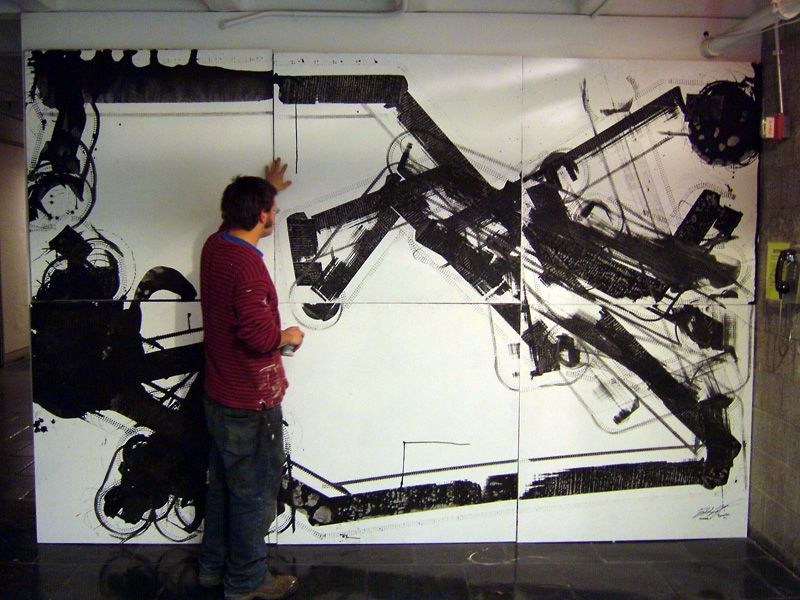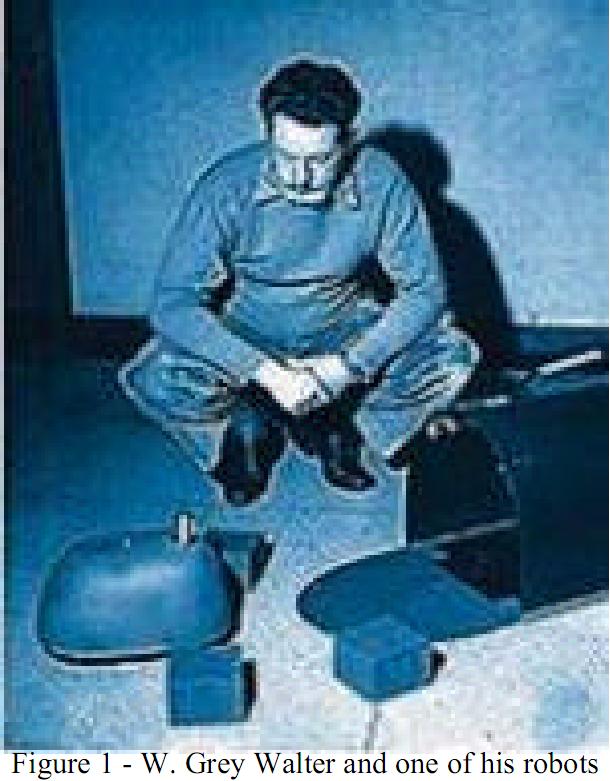
Roombas, or iRobots, have cleaned our carpets and floors since the 1990s.[1] They have been an excellent innovation toward better vacuums ever since. In 2006, a Fine Arts sculptor from Virginia [2] named Bobby Zokaites saw more than just a better vacuum. Zokaites saw a potential tool to create modern art. What do you get when you take the vacuum out of the Roomba and add a paintbrush? Roomba Paintings!
One day, Zokaites wanted to express himself with a portrait and thought that a robot could be used to explore its painting potential [3]. At one point, he questioned his own expression by asking if the resulting product represented his expression or the robot's expression. The social stance between human and cybernetics is still a very unexplored subject and Zokaites' behavior should be noted for future art studies. After all, Roy Ascott mentions that cybernetic art is heavily focused on behavioral triggers and environments.
In the video, Zokaites lays the canvas on the floor for the Roomba to move around on. Some of the paint drips and splatters all over the canvas. whether it was on accident or on purpose is up to human opinion. He also uses a stick to guide the Roomba when it isn't going a direction he wants. This style of creating art is very similar to Jackson Pollack's laid back approach to art.
Robert Mallery breaks down Cybernetic Arts in six different categories. Zokaites' Roomba Paintings is most likely categorized as a stage 3 Cybernetic Art, where the piece "requires that the computer, within limits sharply defined by the programmer, make not only routine discriminations but decide alternative courses of action governing the whole system." The "routine discriminations" refers to the walls and the direction the Roomba is going. The "alternative courses" are the paths that it takes when it bumps into an obstacle.
 Another piece that has deeper cybernetic origins and is worth noting in junction with Roomba Paintings is Walter Grey's 1948 tortoise robots Elmer and Elisie. They way These Elmer and Elisie moved is very similar to how the Roombas move. The creator of Roombas, Joe Jones,[4] is aware of Grey's work, going as far as naming one of his robots Tertill as a homage to Grey's tortoise designs. More recently, Portuguese artist Leonel Mora used autonomous robots armed with pens to generate large artworks generated by unpredictable, emergent group behavior. His Robotarium X is a good example of this.
Another piece that has deeper cybernetic origins and is worth noting in junction with Roomba Paintings is Walter Grey's 1948 tortoise robots Elmer and Elisie. They way These Elmer and Elisie moved is very similar to how the Roombas move. The creator of Roombas, Joe Jones,[4] is aware of Grey's work, going as far as naming one of his robots Tertill as a homage to Grey's tortoise designs. More recently, Portuguese artist Leonel Mora used autonomous robots armed with pens to generate large artworks generated by unpredictable, emergent group behavior. His Robotarium X is a good example of this.
The origins of Walter Grey's robots and its influence on the Roombas gives Zokaites' Roomba Paintings an engineering aspect. Like the exhibitions in Cybernetic Serendipity. Roomba Paintings is indeed a cross between great engineering/science and art.
I feel that Roomba Paintings are a very innovative display of cybernetic art, utilizing computer a.i. and mechanical parts to create a very unique painting. The path that the Roomba takes is unique in every situation. This makes every Roomba Painting its own special scenario.
1. https://www.irobot.com/about-irobot/company-information/history
2. http://www.bobbyzokaites.com/about
3. https://monicaaissamartinez.wordpress.com/2018/08/08/can-a-robot-create/
4. https://www.news-leader.com/story/news/business/2017/06/09/inventor-roomba-southwest-missouri-native-release-new-robot/371868001/
5. Robert MALLARY Computer Sculpture: Six Levels of Cybernetics [1969]
